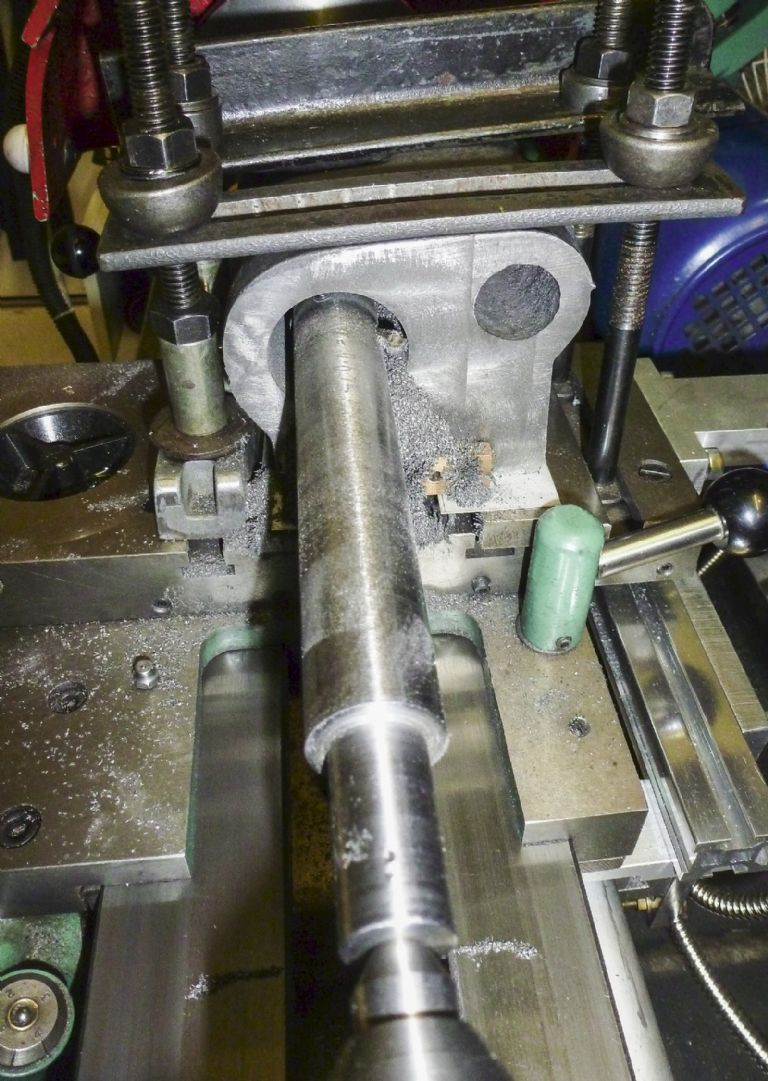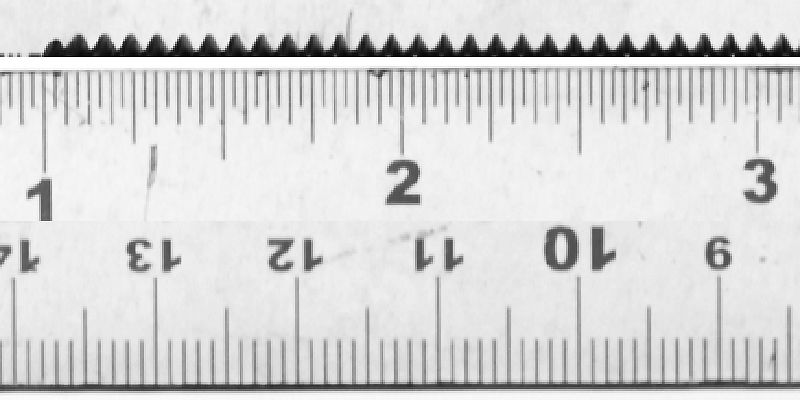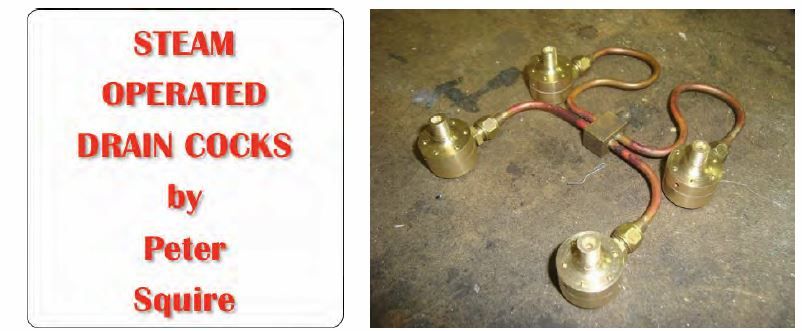Member postings for Fowlers Fury
Here is a list of all the postings Fowlers Fury has made in our forums. Click on a thread name to jump to the thread.
| Thread: cateracts. |
| 25/09/2020 18:05:53 |
It's many years since my bilateral cataract removals. A few years later, one night a distinct spider's web appeared in my left eye. First thing next morning the retina was lasered back in the hospital. I remain amazed at ophthalmic surgeons' skill and continue to wonder how a couple of hundred years ago, aged watchmakers. engravers etc, undoubtedly with cataracts, could achieve such precision in dimly lit workshops. It's fascinating to watch a video of cataract sugery (if you feel you can !); this is one of the most informative:- |
| Thread: cutting upholstery foam |
| 01/08/2020 12:08:08 |
Re: " As I understand it the foam ,as used in furniture, gives off cyanide fumes when set alight, " It's a complex issue and drifts way off topic but in essence:- Relevance to model engineering? Very little I guess unless you insulate the loco's firebox with flex PU or feathers ! |
| 31/07/2020 14:58:22 |
In the flexible polyurethane foam industry large blocks are cut with big factory-sized "band knives". And....the blade lubricant used is critical. As others above have suggested, buy new foam blocks. |
| Thread: Basic Electrics |
| 13/07/2020 11:44:01 |
I'd like to better Peter Shaw's claim to fame viz " And there is the pistol drill at probably 35 to 40 years old (and which still makes the battery powered things look puny!) "
|
| Thread: Machining cylinder from solid |
| 13/06/2020 12:11:48 |
Of potentially more impact on your well-being than inhaling some elemental iron and carbon is washing your hands at night after machining cast iron. If married or under some similar constraint, then next morning SWMBO will discover the bottom of the sink/basin is covered with myriads of rust spots, acrylic sinks being the worst as the iron particles lodge in the surface to rust overnight. A rapid application of Jenolite or similar to the surface will be needed to placate her. A dedicated, plastic bowl for hand washing is probably the easier solution but of course, you’ll need to empty it outside every time ! Between centres boring bars. 1. GHT's original article in Model Engineer. Model Engineer, 3rd June 1977 p. 615 (Vol 143, No. 3562) 2. That most valuable compendium of GHT's articles - "The Model Engineers Workshop Manual (vol 1)" 1992. Pub: Tee Publishing, ISBN 1-85761-000-8. It's on page 92. Copyright of course, but herewith GHT's introductory paragraph. His comment about the normal, 90 deg tool resulting in flexure of a boring bar was well made IMHO. By putting the tool in the bar at an angle, that effect is very much reduced as well as resulting in very much easier ability to measure the swing with a micrometer. Geo. Thomas wrote “….the boring bar in its usual form leaves a lot to be desired. My main objection to it is the absence of any controlled means of advancing the cutter and all my design attempts to provide a suitable means ended in severe weakening of the bar at the point of maximum bending moment.” IMHO it would time well spent to make one to the GHT design at the maximum diameter commensurate with your cylinder bores. This was my GHT b-c bar boring out a 5" CI cylinder casting. That brass item on the casting, under the boring bar, contains several small Neodymium magnets. It should have been within a plastic bag so that thecollected iron bits could have been emptied straight in the bin ! |
| 12/06/2020 15:21:44 |
I would have thought that purchasing a CI cylinder casting from one of the ME suppliers was the preferred start but respect your decision to machine from a chunk of CI. Your "raw block" seems to have plenty of machining excess which sadly, many commercial castings do not. Have you looked at Minx postings here?: **LINK** If you're going to c/s the tapped holes, do it before you tap them, not after.
|
| Thread: DRO kit for Myford S7 from Machine DRO |
| 11/06/2020 11:23:06 |
As Jason recollects above, there were articles describing in full the installation of the M-DRO kit on a S7. The first article appeared in MEW No. 267, May 2018. |
| Thread: Annoying milling cutter diving into the work |
| 19/05/2020 15:20:30 |
| Much wisdom above, if you're using a cutter with a threaded shank e.g. for Clarkson collet, then turn down diameter of appropriate nut to fit down, inside collet. If screwed down tight to bottom of cutter & cutter is pulled down collet before tightening up, cutter won't run out of collet but as above, clamp each axis. |
| Thread: 2" Clayton Wagon |
| 19/05/2020 14:58:27 |
| "Hopefully someone may come along with" Are you hoping someone will scan them all for you or hoping you'll receive a list of references? If the former, there's copyright infringement to consider. If the latter, you might use one of the online indices. As you probably know, there's always back nos of ME on Fleabay. The hand pump in the water tank will provide adequate boiler water when stationary. IMHO what spoils many model Claytons is that builders have not put the compound curvature on the front apron. Fairly easy if you get a large lump of soft wood & shape it as per design. Cut in holes for clamps, anneal the brass sheet and bend to wood former. Then with piercing saw keep cutting 'darts' (Vs) and with more annealing, tap down to form compound curve. Soft solder into joints & after wet & dry it's ready for paint. |
| 19/05/2020 10:46:25 |
Jon, checking a couple of your "later articles" I assume they're all by Bernard Lundberg. I'm not aware his impressive articles were ever published as a collection. The original construction series by Robin Dyer was easy to follow (must have been as I made one) but Bernard's research adds markedly to the authenticity of the model. For example ME vol 170 (3946) repeats Dyer's confession that he had no information on the front axle; Lundberg's article corrects that. I'd recommend obtaining a copy of ME 170 (3944) as this contains an informative but very short article by Lundberg "Clayton Wagon General Notes". In the same issue, there's an article about building a Clayton with twin rear axles - though never produced by the works. There are a few significant shortcomings in the original design. Main one being that the main drive gearing is too fast. My failing memory is that at least one remedy for this was published in ME, but it wasn't elegant or of course, prototypical. |
| Thread: Startrite Mercury drill |
| 22/04/2020 00:45:33 |
| My apologies for creating any additional confusion. Dennis R is correct, the thread is 5/8 BSF. I had no BSF taps & dies >1/2" & obviously no nuts of that thread. I had to place the rule on top of the threaded rod on the scanner and thought there'd be no parallax yet the set up "lost" half a tooth. |
| 21/04/2020 16:44:18 |
This has provided a not-so-welcome break from the trials & tribulations of Walschaerts valve timing.!
Edited By Fowlers Fury on 21/04/2020 16:45:32 |
| Thread: Correct boring with a steady - advice please :-) |
| 13/04/2020 12:41:32 |
All sound advice above but one question.....how are you returning the boring bar to start another cut? If you're using the self-act (or winding out with the lead screw hand-wheel) at the same setting to back out the tool this could be a contributory factor. The safest way is to stop the lathe at the end of the cut, release the carriage and wind out by hand. Now put on your next cut and continue to bore with the self-act engaged. Carry on ad nauseam. (if you use self-act to withdraw the boring tool and there is slackness between the carriage and the lathe bed shears, the carriage can tilt and take off some more material from the bore on the return. I appreciate I'm inviting abuse for offering this but years back, on an old & worn ML10, I discovered this issue. It was when boring out the rear axle for the Clayton wagon. Eventually after stopping the 'powered withdrawal' I got it parallel).
|
| Thread: James Scooter |
| 28/03/2020 21:06:01 |
I still have (& must get rid of) all the issues of Motorcycle Scooter & Three-wheeler Mechanics, from No. 1 through to early1966. Anyway if the OP wants a pdf of that test - for what it's worth - just PM me. |
| Thread: Virus Alert Levels |
| 19/03/2020 12:29:36 |
Credit where it's due.......... The original was from the great John Cleese, back in around 2013, I think. |
| Thread: Solar panel surprise |
| 13/03/2020 14:17:39 |
Re. comments after my earlier posting about solar panels maybe needing an annual clean. I suppose If your house windows remain clear after 12 months without any cleaning, then don't bother about the panels. Around here. our (vertical) window glass becomes quite coated in dust, bird cr*p & muck in 6 weeks so an annual clean of the panels seems worthwhile. |
| 11/03/2020 23:03:43 |
Agreed, the FIT and money back is welcome yet there always seems another side to a benefit. Our builder demanded another few hundred quid for software he was advised to install at the last minute. Apparently if you don't have the s/ware which shows how much each panel is generating then in the event of fall-off in generated power, it costs a substantial amount to find which of the panels is faulty. At least that's what all the new house purchasers were told. An awful image as it has been scanned from the phone but the aforementioned s/w is "SolarEdge".
|
| Thread: Tooling Choices, identification & WM290 Feed Question |
| 02/03/2020 12:39:00 |
To: Dave B. Should you wish to add to any confusion you still have after your original posting https://www.model-engineer.co.uk/forums/postings.asp?th=130308&p=2
|
| Thread: Steam operated drain cocks |
| 16/01/2020 22:47:19 |
In 2015 there was a short article on Steam Operated Drain Cocks in David Carpenter's Model Engineers Website. I like the design and eventually plan to make a set as described by Peter Squire. Usual "for personal use only" applies to downloads, so check the website:- Doubt there's a problem with me showing the article's heading:- (You could PM me if interested)
|
| Thread: Are these clock related please |
| 22/11/2019 12:51:07 |
The box on the RHS is indeed for watch/clock lathe work (mine has a plate showing "Boley" on the lid). They're all pretty much interesting antique items and if your offer to pass them on isn't taken up, such items often appear on Fleabay .
|
Want the latest issue of Model Engineer or Model Engineers' Workshop? Use our magazine locator links to find your nearest stockist!
Sign up to our newsletter and get a free digital issue.
You can unsubscribe at anytime. View our privacy policy at www.mortons.co.uk/privacy
- hemingway ball turner
04/07/2025 14:40:26 - *Oct 2023: FORUM MIGRATION TIMELINE*
05/10/2023 07:57:11 - Making ER11 collet chuck
05/10/2023 07:56:24 - What did you do today? 2023
05/10/2023 07:25:01 - Orrery
05/10/2023 06:00:41 - Wera hand-tools
05/10/2023 05:47:07 - New member
05/10/2023 04:40:11 - Problems with external pot on at1 vfd
05/10/2023 00:06:32 - Drain plug
04/10/2023 23:36:17 - digi phase converter for 10 machines.....
04/10/2023 23:13:48 - More Latest Posts...
- View All Topics
- Reeves** - Rebuilt Royal Scot by Martin Evans
by John Broughton
£300.00 - BRITANNIA 5" GAUGE James Perrier
by Jon Seabright 1
£2,500.00 - Drill Grinder - for restoration
by Nigel Graham 2
£0.00 - WARCO WM18 MILLING MACHINE
by Alex Chudley
£1,200.00 - MYFORD SUPER 7 LATHE
by Alex Chudley
£2,000.00 - More "For Sale" Ads...
- D1-3 backplate
by Michael Horley
Price Not Specified - fixed steady for a Colchester bantam mark1 800
by George Jervis
Price Not Specified - lbsc pansy
by JACK SIDEBOTHAM
Price Not Specified - Pratt Burnerd multifit chuck key.
by Tim Riome
Price Not Specified - BANDSAW BLADE WELDER
by HUGH
Price Not Specified - More "Wanted" Ads...
Do you want to contact the Model Engineer and Model Engineers' Workshop team?
You can contact us by phone, mail or email about the magazines including becoming a contributor, submitting reader's letters or making queries about articles. You can also get in touch about this website, advertising or other general issues.
Click THIS LINK for full contact details.
For subscription issues please see THIS LINK.
Model Engineer Magazine
- Percival Marshall
- M.E. History
- LittleLEC
- M.E. Clock
ME Workshop
- An Adcock
- & Shipley
- Horizontal
- Mill
Subscribe Now
- Great savings
- Delivered to your door
Pre-order your copy!
- Delivered to your doorstep!
- Free UK delivery!




 :-
:-









 Register
Register Log-in
Log-in


